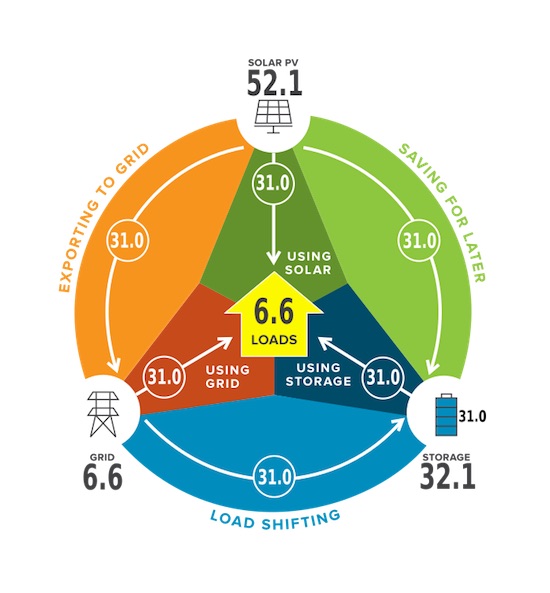The Solar Homes program will grow the number residential solar systems in the state to over 1 million by subsidising 650,000 systems over the next ten years, according to the government. This is roughly equivalent to about 2.5 gigawatts of new generation capacity.
The government should maximise the value of these systems to the state’s electricity system by making them virtual power plant ready – and building the grid of the future.
How to maximise the value of over half a million distributed systems
Expand households’ sphere of self-interest
Most households invest in PV for self-interested reasons, using their solar energy directly to reduce electricity charges or for sending their surplus energy into the grid. In both cases, the solar energy produced benefits the system owner first and the electricity system second.
Victoria’s Smart Homes subsidy will significantly reduce the cost of installing a solar system in the state; many of the projected 650,000 solar households will undoubtedly put this savings – up to $2,225 – towards a small or medium-sized battery bank. As with the solar, households will use batteries to reduce their electricity bills by maximising the amount of energy they produce & consume on site.
These households may be able to extract even more value from their systems by tapping into programs that reward them for participating in the broader electricity marketplace. However, their options are still limited and the benefits less clear than the self-consumption model.
Virtual power plants are one type of program with enormous promise for households, networks, the electricity market and renewables more generally. At the moment, however, they do not yet enjoy mass appeal or availability.
Enable the grid of the future – while preserving customer choice
The upshot of this is that many or most of the Solar Homes incentive beneficiaries will install ‘dumb’ solar & battery systems, unable to benefit from VPP or related programs as they become more commonplace without adding (and paying for) more equipment or services.
By encouraging or incentivising households who participate in the Solar Homes initiative to install a VPP-ready, ‘smart’ solar system, the Victorian government can plant the seeds for the distributed, renewables-based grid of the future.
At the same time, this will unlock more potential value streams for the system owners themselves by ensuring they have the technology necessary to participate in network services and energy markets.
Households participating in Victorian Solar Homes initiative will own their systems privately and will use them primarily for self-consumption. As the number of VPP program & function options expands, these households should have the freedom to participate in the option of their choice (or none at all). As such, the approved VPP-enabling technologies would be both compatible with a range of potential programs as well as agnostic to the inverter & battery products used.
Aim to standardise requirements for VPP participation
Right now, there is no neutral, purpose-built standards defining what makes a distributed system VPP-compatible. Instead, there is an amalgam of not-quite-right standards, communications protocols (both proprietary and open source), and technologies available.
Standardisation and accessibility is a challenge that SwitchDin is working hard to solve. Our StormCloud / Droplet platform aims to simplify the mechanisms for VPP participation without limiting consumer choice of the underlying solar or batteries. SwitchDin makes it possible for a wide and growing range of individual devices to be viewed and controlled remotely; these include inverters, batteries and DRED-enabled appliances such as air-conditioners and heat pumps.
But we can’t do it alone. Nor do we think we should be the only VPP-enabling technology in the game – as much as we’d like to.
The Victorian government has brought in a number of ambitious guidelines and rules under the Solar Homes program, including quality control & OH&S requirements for eligible installers. In future funding tranches, it could also clarify what it means for these systems to be VPP-ready.
As of now, a hodgepodge of standards govern the the layers of VPP functionality, but none are a perfect fit. Two of the most obviously related standards are AS 4777 and AS 4755; the former covers inverter function, while the later covers various categories of demand response, including battery storage, air conditioners, pool pumps and electric vehicles. There are also the connection agreements of the electricity networks which can be used to define how systems are to be configured.
However, neither of these address the specific need for clearly defined, bi-directional communication (i.e. monitoring and control) required in VPP applications. The SunSpec Alliance’s specifications, IEEE 2030.5 and IEC 61968 standards are part of the effort to bring coherence and consistency to this field and are also relevant to the discussion. Utilities also need to define their own VPP interaction requirements such as being explored by AusNet and their DENOPs platform…
Read full article at One Step Off the Grid




